Action Directe, Wolfgang Güllich's 25-year-old Frankenjura masterpiece
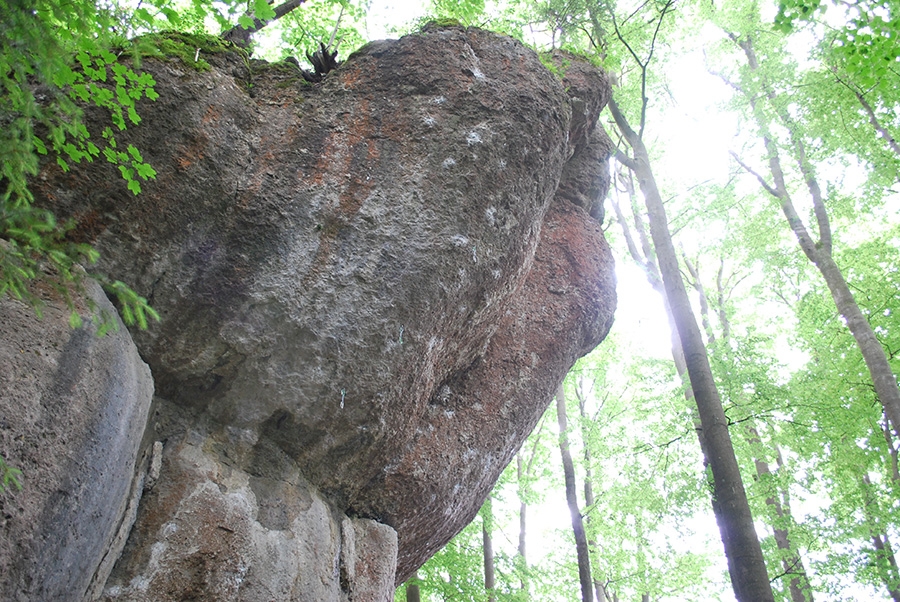
 1 / 23
1 / 23 Planetmountain.com
Planetmountain.com
Start beneath the 45° prow, right hand on a poor pinch, reach up left to sharp shallow mono, calibrate right foot then dyno upwards, without a moment’s hesitation, and stick the good two-finger pocket... This, in short, is the nigh- impossible starting sequence to Action Directe, Wolfgang Güllich's masterpiece at the tiny limestone outcrop called Waldkopf, nestled deep in the Frankenjura, and first freed by the German climbing ace on 14 September 1991. In its twenty-five year history the route's reputation has grown almost beyond measure and it has withstood the severest test of all, time, emerging as one of the most famous routes in the world. It is sport climbing's equivalent to The Nose on El Capitan in Yosemite. Or, put in layman's terms, Action Directe is to sport climbing what Wembley is to football.
On that Saturday in mid-September a quarter of a century ago, Wolfgang Güllich was 30 years old and the 70 seconds he required to perfectly execute the moves were the culmination of a life dedicated to climbing and exploring the vertical impossible. The ascent marked the absolute apex of what could be done at the start of the 90's and even today, more than half-way through the second decade of the new millennium, this climb remains an alluring dream for many, an irresistible rite of passage and tremendous test for only the best of the best. But how did this route come about? And what led Güllich to break yet another new boundary and forge his way into the history of this sport?
Wolfgang Güllich - the natural climbing machine
Born in Ludwigshafen on 24 October 1960, Wolfgang Güllich took to climbing in the Südpfalz aged thirteen and soon his entire life revolved around this sport. Gifted with supreme physical and mental capabilities, he quickly made for a name for himself by repeating the region’s hardest routes and then establishing his own. Climbing trips to the Elbsandsteingebirge behind the Iron Curtain in communist-ruled DDR, proved formative, as did early trips to the USA. Towards the end of the 70’s he struck a cord with Kurt Albert who in 1975 had introduced the "rotpunkt" philosphy which, translated into English as "redpoint", is recognized nowadays as the basis on which performances are measured in this sport. Albert and Güllich lived together in the Frankenjura for 11 years and formed an inseparable and extremely powerful climbing partnership - so much so that in 1984 the German government recognized their services to climbing by awarding them, and another pioneer Sepp Gschwendtner, its highest sport accolade, namely the "Silberne Lorbeerblatt". Güllich spent the next decade climbing hard worldwide, proving his worth time and time again and raising the sport climbing bar on a staggering three separate occasions: in 1984 with the world's first X/8b (Kanal im Rücken, Frankenjura), in 1985 with the world's first X+/8b+ (Punks in the Gym, Mt. Arapiles, Australia) and then two years later, in 1987, with Wallstreet, the world's first XI-/8c. Gullich’s hegemony was broken only once, when Britain’s Ben Moon entered a new realm of difficulties in 1990 with his Hubble at Raven’s Tor, speculated by some to be even harder than the Englishman had originally suggested…
Campus Board - a key to success
Güllich’s natural strength was second-to-none, yet while he rightly pointed out that the body's most important muscle is the brain, he also realised that to make a significant step forward, his already rigorous training regime would have to undergo a marked change. The key would be to focus on the specific requirements of each individual route. It was with this in mind that in 1988 he helped developed the Campus Board at his local gym, the Campus Centre. The "Campus Board" is now found in practically every climbing gym throughout the world, and the invention of this training tool would ultimately prove fundamental to future successes. Blasting up and, in particular, dynoing down the rows of tiny crimps perfectly suited the ferocious power needs of the nearby Frankenjura.
Expeditions - riding the storms
Although the younger generations know Güllich in particular for Action Directe, his climbing represented far more than this inspirational sport climb. Güllich’s success on Action Directe in 1991 stemmed from the aforementioned decades of hard climbing worldwide, and his thirst for unknown territories wasn’t refined to the crags. During the late 80’s this quest led him up into the high mountains in far-flung corners of the globe. In 1988, for instance, he travelled to Pakistan’s Karakoram where together with Kurt Albert, Bernd Arnold, Martin Leinauer, Hartmut Münchenbach and Martin Schwiersch he made the first free ascent of the Nameless Tower via the Yugoslavian route. Only a year later and just a few meters to the left he added an absolute milestone to high altitude climbing when, with Kurt Albert, Christof Stiegler and Milan Sykora, he made the first ascent of Eternal Flame up the Nameless Tower. And then in early 1991, the same year therefore as Action Directe, he transferred these mountain skills to the inhospitable Paine Towers in Patagonia where together with Kurt Albert, Bernd Arnold, Norbert Bätz and Peter Dittrich he helped make the first ascent of Riders on the Storm. Another absolute breakthrough in big wall climbing in the Greater Ranges. These expeditions convinced Güllich that cutting-edge rock climbing at altitude was still in its embryonic stages, and also gave him critical distance from the at-times oppressive Frankenjura climbing scene. Importantly, they also provided the motivational spark that set the flame to what would evolve later into Action Directe.
Milan Sykora - the vision
Güllich returned from the Paine Towers highly motivated and although after months of intense training he confided to being stronger than ever before, he didn’t have a project to channel this immense strength into. Close friend Milan Sykora thankfully came to the rescue, pointing Güllich to his own project hidden deep in the Frankenjura forest, a stunning prow at the lone Waldkopf crag. This massive boulder stands apart from the more popular crags and although a couple of other routes on the right had already been established, the jaw-dropping prow had remained untouched. Working very much under the media’s radar, Sykora was nevertheless one of the best climbers in Germany at the time and his new routing vision had resulted in numerous climbs up to UIAA 10. Sykora had originally bolted the line coming in from the right, managed to climb the individual moves through the upper section and believed the lower section to be feasible but too difficult for himself. He generously offered the project to Güllich, who promptly bolted the direct start. Hence the name.
Action Directe - a new level of difficulty
The beauty of the prow has to be seen to be believed and Güllich set to its extraordinary difficulties with renewed vigor. Initial uncertainties were soon brushed aside and, after a mere 11 days of working the route, he faultlessly flowed up the sequence to claim the route’s first redpoint ascent. Action Directe heralded the start of a new degree of difficulty in the Frankenjura which, as is almost always the case, took time to comprehend. Güllich himself - ever cautious - in the end suggested a straight grade XI, the first of its kind on the UIAA scale adopted in Germany. Given the way different climbing scales overlap, this equates to either 8c+ or 9a, and over time the route settled down as the world's benchmark 9a.
Wolfgang Güllich - the tragic loss
When Güllich climbed Action Directe, he was enjoying the happiest period of his life. He had married just five days prior to freeing his masterpiece , and was looking forward to embarking on new adventures life would throw at him. Over the previous decade he had led sport climbing to new heights in terms of absolute technical difficulties, explored its potential at high altitude in the harshest of mountains, and was undoubtedly no way near his athletic apex. But all this ground to a cruel and tragic halt on 31 August 1992 when he died as a result of a car crash on Germany’s Autobahn. The sudden loss of Güllich stunned the close-knit climbing community, his premature departure leaving a gaping void that only over time was filled by the heritage of routes he left for everyone to enjoy.
Alexander Adler - the first repeat
Action Directe was finally repeated four years after its first ascent by the extremely talented Alexander Adler. Adler had served his apprenticeship in communist-ruled East Germany, in particular at the Elbsandsteingebirge close to Dresden which is renowned for its technical and psychological climbing. When the Berlin Wall unexpectedly fell at the end of 1989, Adler was finally free to travel. He quickly proved his worth in climbing competitions, and then turned his attention to the biggest sport climbing prize of all, dedicating body and soul to this quest. He conceded that repeating the route had become an absolute obsession, and in the end his strict diet and punishing training paid dividends: on 09 September 1995 Action Directe finally gave itself to the power of another true master. Since then the pockets have been linked successfully by only a handful of the world's best and the exclusive list reads like a "Who’s Who" of sport climbing.
Action Directe - the legacy continues
Action Directe's draw was, is, and will always be irresistible for the vertical elite. Repeats will continue to make headline news. The first female ascent is still undone and will prove a major milestone when it finally comes about. Interestingly though, the line as it was originally climbed is hardly ever repeated; as it happens, Güllich chose to climb the route following the vertical fall-line direct, straight through the steepest section which involved swapping hands on the jug after the starting dyno to the good pocket and then holding a series of micro pockets, instead of crossing through rightwards as almost all others have done. Crossing through involves more moves, but provides an easier sequence. Did Güllich know about the possibility of this variation before his free ascent? If so, did he purposefully set out to make things even more difficult? We may never know the answer to the first question but in reply to the second, it is worth pointing out that Güllich was no newcomer to the "keep your eyes shut and climb straight up" approach: calibre routes such as Wallstreet, Kaum Zeit zum Atmen, Amadeus Schwarzenegger, Highlight and Mikrowelle were all climbed in this very direct style. Does it make a difference that others have repeated the route using a different sequence? No, not at all. The holds are all part of the route, close-by and logical, they are Mother Nature's gifts. How and when they are used is every climber’s prerogative. All repeats of Action Directe are superlative achievements therefore, full-stop. Having said that though, from a raw power point of view, what stands out is that Güllich's 1991 version of Action Directe is even harder than many might believe. And although it doesn't warrant a different grade, there is good reason why most opt against climbing Wolfgang’s original sequence. The legend lives on.
The author would like to thank Peter Beal, Martin Joisten and Alexander Megos for their support. Recommended further reading: Wolfgang Gullich: A Life in the Vertical by Tilmann Hepp
Action Directe (9a), Waldkopf, Frankenjura (GER)
1. Wolfgang Güllich, Germany (14/09/1991) - First ascent
2. Alexander Adler, Germany (1995)
3. Iker Pou, Spain (2000)
4. Dave Graham, USA (2001)
5. Christian Bindhammer, Germany (2003)
6. Richard Simpson, UK (2005) - contested
7. Dai Koyamada, Japan (2005)
8. Markus Bock, Germany (2005)
9. Kilian Fischhuber, Austria (2006)
10. Adam Ondra, Czech Republic (2008)
11. Patxi Usobiaga, Spain (2008)
12. Gabriele Moroni, Italy (2010)
13. Jan Hojer, Germany (2010)
14. Adam Pustelnik, Poland (2010)
15. Felix Knaub, Germany (2011)
16. Rustam Gelmanov, Russia (2012)
17. Alexander Megos, Germany (2014)
18. Felix Neumärker, Germany (2015)
19. Julius Westphal, Germany (2015)
20. Stefano Carnati, Italy (2015)



 Copia link
Copia link

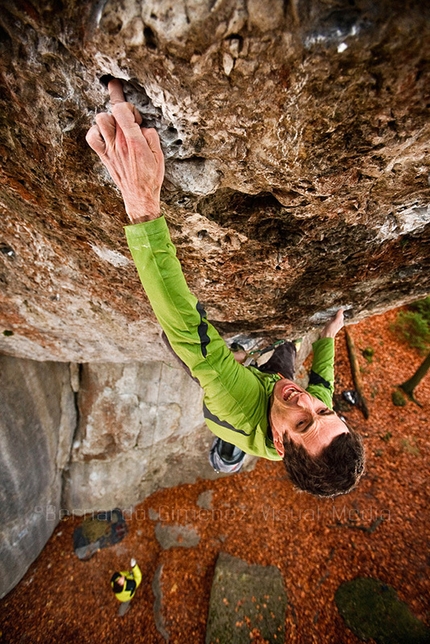
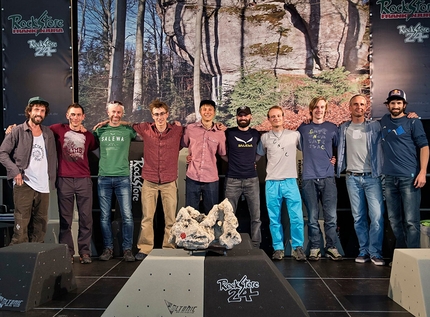
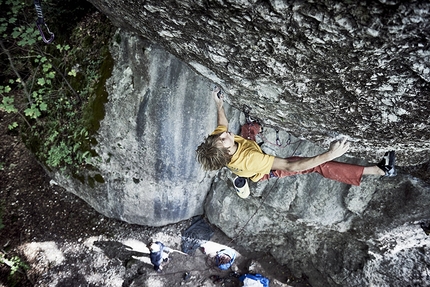
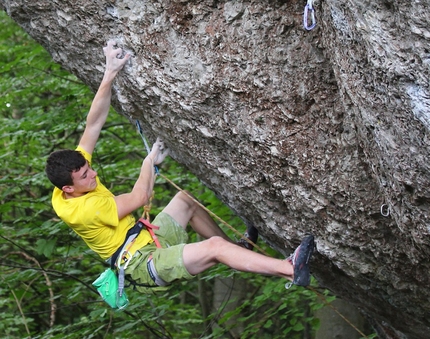
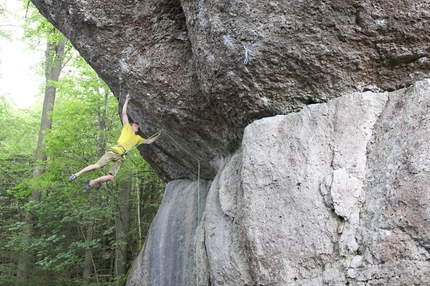
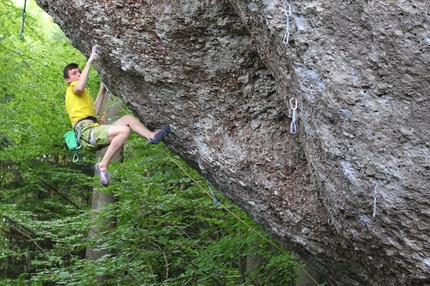
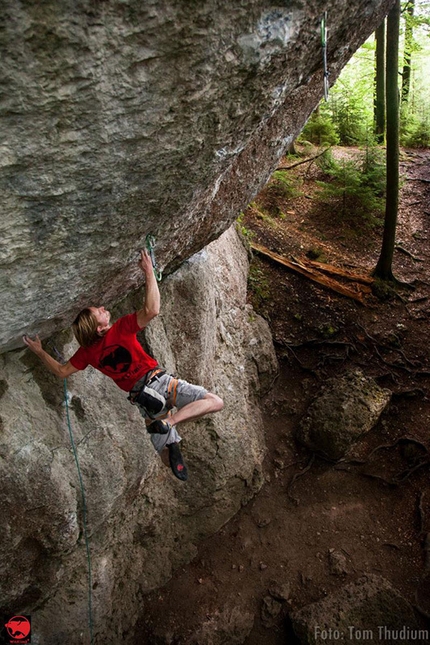
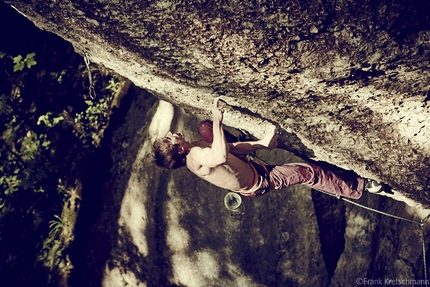
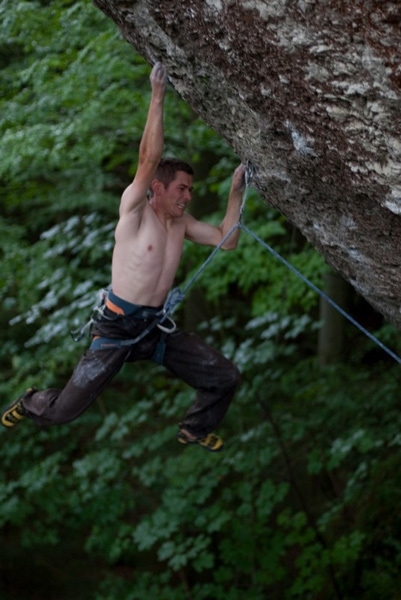
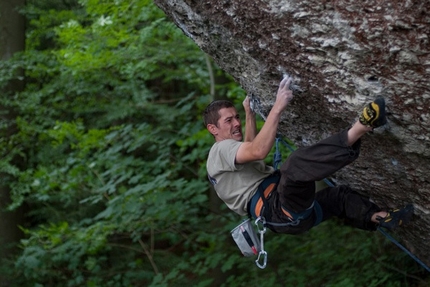
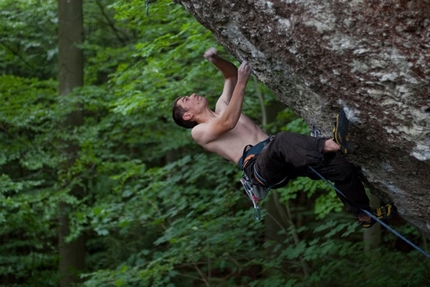







 See all photos
See all photos





















